A university degree in Australia used to mean something.
It used to be that to gain entry to a decent course at a decent institution, students were required to work hard at school and gain a tertiary entrance score above a high threshold.
Those days are long gone. Thanks to the former Labor Government’s uncapping of university places in 2012, allowing universities to recruit as many students as they can fit in order to accumulate HELP/HECS funding, actual tertiary entrance scores have plummeted, meaning every person and their dog can now get a degree, devaluing their worth in the process.
Evidence of this is on display in a new Higher Education Standards Panel discussion paper, which has found that 56% of students commencing bachelor degrees were admitted based on criteria other than their Australian Tertiary Admission Rank (ATAR) in 2015 – the highest proportion in a decade – and that average ATAR entrance scores have fallen considerably:
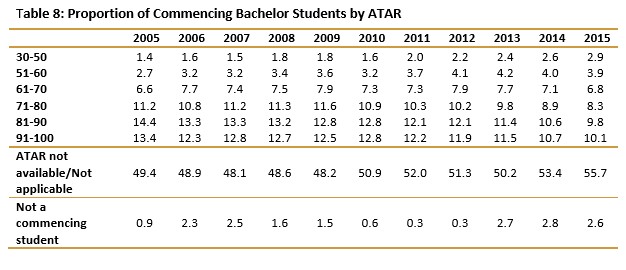
The report also found “that the likelihood of withdrawing from study is generally correlated with ATAR (see Figure 7)”:
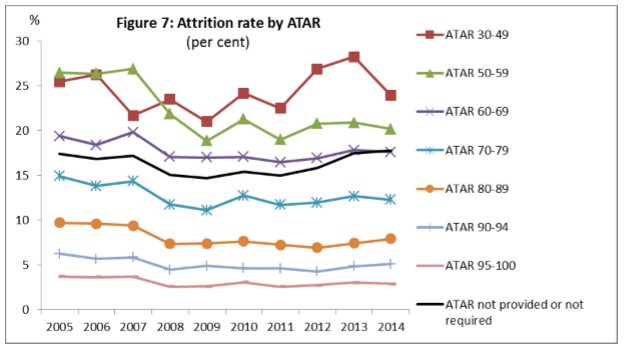
In addition to the lowering of university entrance scores, further evidence that Australia’s universities have turned into quantity-based ‘degree factories’ is also provided in the most recent Department of Employment skills shortages report, which showed there were a record 1 million domestic students enrolled with a higher education provider, 730,000 of which were enrolled in bachelor degrees – an extraordinary amount of higher education students in an economy of 24.5 million:
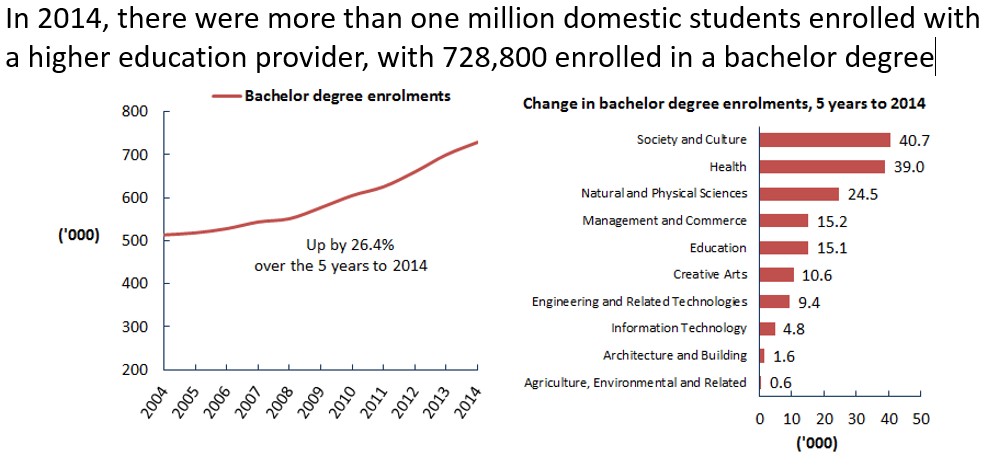
Meanwhile, bachelor degree graduate employment outcomes are falling and are at “historically low levels”:
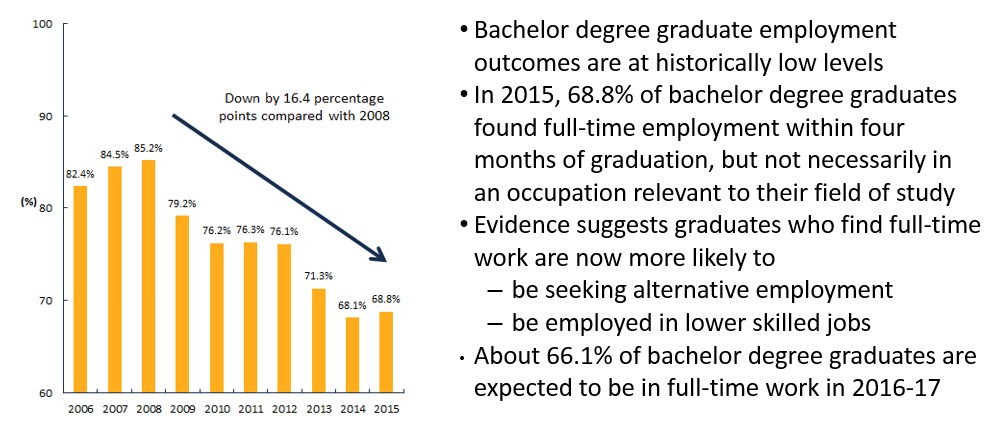
The problem is accentuated by the proliferation of international students, whereby degrees are sold to maximise profit at the expense of dumbed-down standards, with foreign students also enticed with the prospect of gaining permanent residency once they finish their courses, thus maintaining the population ponzi.
The more people that have a degree, the more this becomes a basic expectation for employers, leaving those without one further behind. Meanwhile, those that do obtain a degree are experiencing a gradual diminution in their pay, with graduate starting salaries for bachelor degree graduates deteriorating steadily since the 1970s, commensurate with the rise in university participation:
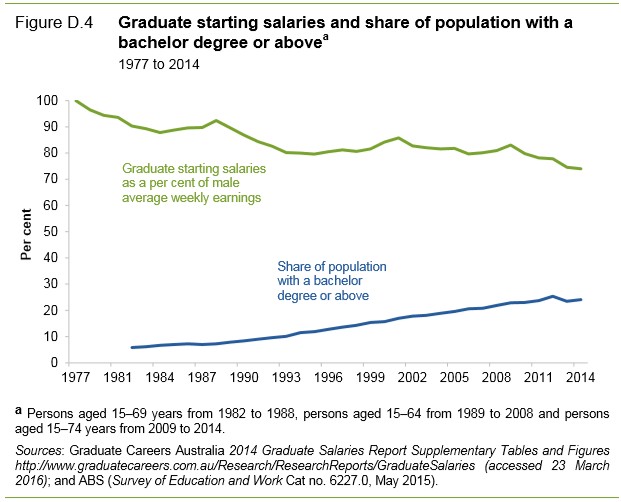
In a similar vein, employers in Australia no longer bother recruiting school leavers and training them up. Instead, they tend to recruit university graduates and then complain when they don’t have the requisite skills. In the meantime, students are forgoing earnings while they study, while sinking tens-of-thousands of dollars of sunk costs into gaining their increasingly worthless degree.
Australians need to ask themselves: what is tertiary education actually for and who does it benefit? Is it a public good used to boost the nation’s productivity and prosperity, or is it merely another commodity to be sold for short-term profit to line the education sector’s pockets?

